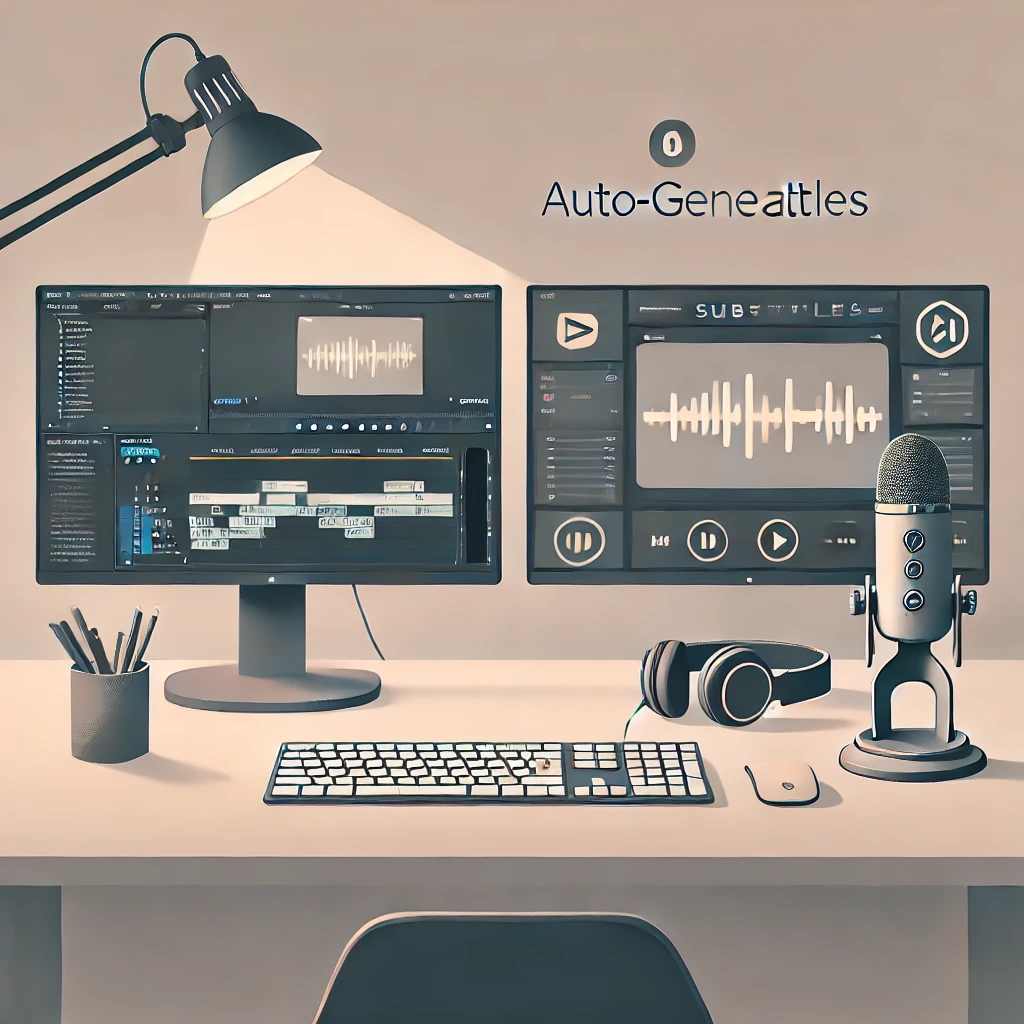Table of Contents

Black Hat SEO Techniques Every Beginner Blogger Must Avoid in 2024
Starting a new blog is exciting — the possibilities feel endless. You dream of growing your traffic, ranking on Google, and building a loyal audience. But somewhere along the way, you stumble across shady promises like:
“Rank #1 on Google overnight!”
“Buy 1,000 backlinks for only $10!”
“This secret trick boosts SEO instantly!”
If these sound familiar, you’re not alone — and you’re in dangerous territory.
These too-good-to-be-true strategies are known as black hat SEO techniques, and they’re not only unethical, but they can actually destroy your blog’s potential before it ever gets off the ground. While these tactics may offer a quick bump in visibility, they’re built on manipulating search engines — and Google is smarter than ever at catching them.
In this guide, we’ll walk you through:
- What black hat SEO actually is (in plain English)
- The most common SEO mistakes new bloggers unknowingly make
- Why these tactics no longer work in 2024 (thanks to AI like Google’s SpamBrain)
- And what you should do instead to build long-term SEO success — the right way
Let’s dive in — and protect your blog from costly SEO traps.
🟦 Section 1: What Is Black Hat SEO and Why Is It Dangerous for New Bloggers?
When you’re just getting started with blogging, SEO might feel like a mysterious puzzle. You learn that higher rankings on Google mean more traffic, more clicks, and more growth. So you search for advice. You stumble across terms like “link building,” “anchor text,” and “backlink packages.” Some tutorials promise instant results. Others claim secret strategies. And before you know it, you’re reading about techniques that sound powerful—but also a little suspicious.
That’s where black hat SEO techniques come in.
🚩 What exactly is black hat SEO?
Black hat SEO refers to tactics that manipulate search engine algorithms to gain visibility—often at the expense of user experience or search engine guidelines. These methods go against what platforms like Google consider ethical or sustainable.
Here’s the thing: black hat SEO is not always obvious. Many beginner bloggers use these techniques without knowing they’re doing anything wrong. Why? Because black hat strategies often disguise themselves as shortcuts, growth hacks, or “hidden tactics pros don’t talk about.”
Some classic examples include:
- Buying backlinks from shady sites or forums
- Keyword stuffing (using the same phrase unnaturally over and over)
- Cloaking (showing different content to users and search engines)
- Using private blog networks (PBNs) to fake domain authority
- Hiding links or text in footers or background colors
- Spamming blog comments with your own site’s links
💣 Why is it risky — especially for beginner bloggers?
Because it works… until it doesn’t.
You might see a small traffic boost. Maybe you rank on page one for a low-competition keyword. But the moment Google detects suspicious behavior, your blog is flagged. Your rankings disappear. In some cases, your entire domain is de-indexed—meaning your blog no longer appears in any search results at all.
And recovering from a Google penalty is far harder than building your blog the right way from the start.
🧠 Google’s Spam-Fighting AI: SpamBrain
In late 2022, Google introduced SpamBrain, a machine learning system designed to automatically detect link spam and other manipulative behaviors. Unlike older systems, SpamBrain can now:
- Identify paid and manipulative links, even across multiple languages
- Detect link networks or unnatural backlink patterns
- Neutralize spammy links — meaning they provide no SEO benefit at all
As of 2024, Google continues to update SpamBrain to be faster and more precise. That means even seemingly small tactics like footer links or guest post link exchanges are under scrutiny.
⚠️ If you’re just starting out, here’s what you need to remember:
Black hat SEO techniques don’t build your blog—they sabotage it.
They promise fast results, but often lead to long-term penalties. More importantly, they waste your time, your effort, and your credibility. As a beginner, you should focus on building trust—with your audience and with search engines.
Coming up next: we’ll explore the 7 most common black hat SEO mistakes that beginner bloggers make (often by accident), and how to spot them before they do any damage.

🟦 Section 2: 7 Common Black Hat SEO Techniques Beginner Bloggers Still Fall For
When you’re just starting your blogging journey, it’s easy to feel overwhelmed by SEO. You might hear about people ranking fast, getting thousands of visitors, or earning money within weeks — and many of them will swear by “secret” tactics or “shortcuts” to success.
But here’s the truth: many of those shortcuts are actually black hat SEO techniques — and while they might deliver a temporary spike in traffic, they almost always lead to long-term penalties or even complete removal from search engines.
Let’s break down 7 of the most common black hat SEO tactics that beginner bloggers often fall for, and explain what they are, why they’re harmful, and what to do instead.
1. Buying Backlinks
You’ll often see offers like:
“1,000 high-authority backlinks for just $10!”
Or even:
“Guaranteed Page 1 rankings with our SEO package!”
These offers are red flags.
In reality, these links usually come from:
- Spammy directories
- Low-quality blog comments
- Fake or abandoned websites
- Sites unrelated to your blog’s niche (e.g., casino, adult, pharmaceutical domains)
While backlinks are important for SEO, Google evaluates link quality, relevance, and natural acquisition. When you buy backlinks in bulk, it’s easy for Google’s algorithms — especially its AI system SpamBrain — to detect patterns of manipulation.
🔴 Penalty Risk: Google may completely ignore those links or penalize your entire site. Recovery can take months.
✅ What to do instead:
- Create high-value blog posts people naturally want to link to (like how-to guides or original research)
- Reach out to other bloggers for genuine collaboration or mentions
- Focus on internal linking between your own blog posts to build structure
2. Keyword Stuffing
Have you ever written something like this?
“The best budget camera for blogging is the best budget camera you can use if you want the best camera for blogging on a budget.”
Not only does it sound unnatural, but Google will instantly flag it as keyword stuffing — an outdated tactic where the same keyword is repeated unnaturally to manipulate rankings.
Even using hidden keyword stuffing (like putting extra keywords in white text or off-screen areas) is detectable and penalized.
🔴 Penalty Risk: Reduced page authority, poor ranking, or removal from search results.
✅ What to do instead:
- Use keywords naturally in the title, headings, and a few times in the body
- Sprinkle in related terms and synonyms (Google understands context thanks to its NLP model, BERT)
- Write like you’re talking to a real person — because you are
3. Cloaking
Cloaking is a deceptive technique where the content shown to search engines is different from what’s shown to users.
For example:
- A blog post might appear to contain educational content, but it actually redirects users to an affiliate product page.
- You might show Google an optimized article but hide it from users using JavaScript or CSS tricks.
This is a direct violation of Google’s Spam Policies and can lead to swift penalties.
🔴 Penalty Risk: Full deindexing (your blog disappears from search entirely)
✅ What to do instead:
- Be transparent. If your content contains affiliate links or sponsored mentions, disclose them.
- Ensure what Google sees is exactly what your reader sees.
4. Hidden Text and Hidden Links
This includes:
- White text on a white background
- Links hidden behind images or zero-pixel elements
- Using CSS to move content off-screen
Some bloggers are tricked into using WordPress themes or plugins that do this without realizing it, often because of poor code or shady developers.
🔴 Penalty Risk: Google can crawl hidden elements and may treat them as attempted manipulation.
✅ What to do instead:
- Regularly audit your site using tools like Google Search Console or Ahrefs Webmaster Tools
- Avoid using “free” themes or plugins from unknown sources
5. Comment Spam (a trap many beginners fall for)
New bloggers often hear that “getting backlinks is key,” and they think leaving their blog link in every comment section is a smart move.
It’s not.
Modern comment platforms like Disqus, WordPress, and Blogger mark most links as nofollow, meaning they pass no SEO benefit. Worse, if your link shows up on hundreds of unrelated blogs, Google may view your domain as spammy.
🔴 Penalty Risk: Association with low-quality sites, loss of trustworthiness
✅ What to do instead:
- Join niche communities (like Reddit, Facebook groups, or real blog comment threads) and contribute meaningfully
- Build your authority through guest posting on relevant sites, not mass-commenting
6. Private Blog Networks (PBNs)
A PBN is a group of websites owned by the same person, built for the sole purpose of linking to each other to manipulate SEO.
They often:
- Use expired domains
- Share the same hosting IP
- Contain low-quality or spun content
- Have nearly identical backlink profiles
Google has been targeting PBNs for over a decade. It takes just one signal — like shared hosting or obvious link patterns — to devalue or blacklist the entire network.
🔴 Penalty Risk: Google may penalize every site in your network, even innocent ones.
✅ What to do instead:
- Build a real site with real content, then earn real backlinks.
- Don’t try to “fake” authority — earn it by being helpful and consistent.
7. Over-Optimizing Anchor Text
Let’s say you want to rank for “healthy dog food.”
So in every post, you link that exact phrase — “healthy dog food” — to your homepage.
Overusing exact-match anchor text looks artificial to Google. It’s especially suspicious when multiple sites link to you with the same phrase.
🔴 Penalty Risk: Google may discount or penalize those links, reducing their value entirely.
✅ What to do instead:
- Use natural variations in your anchor text
- Mix in branded terms, generic phrases (“click here”), and related keywords
✅ Final Thoughts
Black hat SEO techniques aren’t just outdated — they’re dangerous, especially if you’re trying to build something long-term. As a new blogger, it’s crucial to focus on strategies that are ethical, sustainable, and reader-focused.
Up next, we’ll explore how Google identifies black hat SEO behavior — and what tools and AI models it uses to keep search results clean and fair.
🟦 Section 3: How Google Detects and Penalizes Black Hat SEO in 2024
You might be wondering,
“If black hat SEO techniques are so risky, how does Google actually catch them?”
Great question — and the answer is, Google doesn’t just catch them. It hunts them down.
Over the past few years, Google has evolved from using simple algorithmic rules to deploying AI-powered systems that can detect manipulation at scale. In 2024, this detection system is more precise and powerful than ever before.
Let’s walk through exactly how Google identifies black hat SEO and what happens when it does.
🤖 Meet SpamBrain: Google’s AI for Catching Manipulative SEO
In December 2022, Google officially launched SpamBrain, a machine learning system designed to automatically detect link spam and unethical SEO behavior.
By 2024, SpamBrain has become significantly more advanced. It can now:
- Detect paid backlinks and unnatural linking patterns
- Analyze multi-language spam (not just English)
- Identify link sellers and buyers
- Flag networks like PBNs or aggressive guest posting schemes
- Devalue spammy links automatically — without manual intervention
What makes SpamBrain so effective is that it doesn’t rely only on rule-based filters. It learns over time, spotting behavior patterns across millions of websites.
So even if you try to “hide” black hat tactics under custom themes, random link placements, or different anchor text — Google’s AI can still connect the dots.
🕵️ Manual Actions vs. Algorithmic Penalties
There are two ways Google penalizes a website:
1. Algorithmic Penalty
This is automatic. If your site triggers a red flag — like a sudden spike in backlinks from low-quality domains — SpamBrain may:
- Ignore those links completely (they give no SEO value)
- Suppress the visibility of your content in search results
- Drop your rankings with no warning
The scary part? You might not even notice right away. Your traffic just slowly drops.
2. Manual Action
In more severe cases, Google’s Search Quality team might take direct action against your site. You’ll see a message in Google Search Console like:
“Unnatural inbound links detected”
“Cloaking or sneaky redirects”
“Thin content with little or no added value”
If you get a manual action, your blog may:
- Be removed from search results (deindexed)
- Lose all keyword rankings
- Require a detailed reconsideration request to recover
You can check for manual actions in Google Search Console → Security & Manual Actions
🧪 What Triggers Penalties?
Here are some common triggers SpamBrain or manual reviewers look for:
| Trigger | Example |
|---|---|
| Link Spam | Dozens of backlinks from unrelated or low-authority sites |
| Anchor Text Overuse | Same keyword used repeatedly in links |
| Hidden Content | Text or links hidden with CSS, zero-size fonts |
| Cloaking | Different content shown to bots vs. humans |
| PBNs | Links from a network of fake or repurposed blogs |
| Keyword Stuffing | Unnatural repetition of the same phrase |
| Auto-Generated Content | AI-written or scraped content with no original value |
🚨 Real Consequences: What Happens If You Get Penalized?
Let’s say you unknowingly used a Fiverr gig to build backlinks.
At first, your blog shoots to page 1. But a month later:
- Traffic drops to near zero
- You can’t find your blog on Google — even when searching your own domain
- Your posts stop being indexed altogether
You’ve likely been hit with a penalty. And recovering isn’t easy.
To fix this, you’ll need to:
- Identify and remove toxic backlinks
- Submit a disavow file to Google (advanced users only)
- File a reconsideration request
- Wait weeks or even months for a response
That’s valuable time you could have spent creating great content.
✅ How to Stay Safe (Even If You’re New to SEO)
- Stick with white hat SEO: focus on creating helpful, original content
- Build backlinks through relationships, not purchases
- Use Google’s guidelines as your SEO bible
- Monitor your blog in Google Search Console for indexing and link reports
- Don’t fall for “instant results” — SEO takes time, and that’s okay
🟩 Section 4: White Hat SEO Alternatives for Beginner Bloggers
So now you know what not to do.
But what should you do instead?
The good news is that white hat SEO — ethical, search-engine-approved techniques — not only protect your blog, but also lay a foundation for long-term growth and audience trust.
Here are the top white hat SEO strategies every beginner blogger should focus on in 2024.

✅ 1. Create Valuable, Human-Centered Content
Forget trying to “trick” Google. Instead, focus on helping real people.
Google’s latest algorithm updates — especially with systems like Helpful Content Update — prioritize content that:
- Answers real questions
- Demonstrates personal experience or expertise
- Is easy to read and navigate
- Is original (not copied, spun, or AI-overloaded)
Tip:
Write like you’re talking to a friend. Use real examples, explain things clearly, and provide genuine insights. Even simple blog posts like “how I planned my first trip to Japan” can rank if they’re detailed and sincere.
✅ 2. Do Keyword Research the Right Way
Keyword research isn’t about stuffing your content with the same phrase — it’s about understanding what your audience is searching for.
Tools to try (free or beginner-friendly):
Pro Tip:
Target long-tail keywords — specific phrases like “best camera for beginner bloggers 2024” — instead of broad ones like “camera.”
✅ 3. Optimize On-Page SEO
Google doesn’t just read your content — it also looks at how it’s structured.
Make sure you:
- Use your focus keyword in the title, first 100 words, and a few headings (H2, H3)
- Write a compelling meta description
- Use alt text on images
- Break your text into short paragraphs and use bullet points where possible
- Link internally to other posts you’ve written
These small adjustments help both search engines and human readers.
✅ 4. Build Backlinks Naturally
Instead of buying backlinks (which we learned is risky), focus on earning them through:
- Writing guest posts for other blogs in your niche
- Sharing your posts in communities (Reddit, Facebook Groups, Quora)
- Creating link-worthy content (checklists, infographics, free tools, case studies)
If your content solves a problem, people will want to link to it. You just need to help them discover it.
✅ 5. Improve Page Speed and Mobile Experience
Google values user experience, especially on mobile devices.
Use tools like:
- PageSpeed Insights to test your site’s speed
- Mobile-Friendly Test to ensure your blog works on smartphones
Optimize by:
- Compressing large images
- Using fast, lightweight themes
- Minimizing plugins
✅ 6. Be Consistent and Patient
White hat SEO doesn’t deliver overnight results — but that’s exactly why it works long term.
Publishing consistently (even 1 post per week) helps Google understand your site is alive and active. Over time, your domain authority will grow — and so will your traffic.
💡 Bonus Tip: Build Trust with E-E-A-T
E-E-A-T stands for:
- Experience
- Expertise
- Authoritativeness
- Trustworthiness
Google uses this framework to evaluate content quality. Even if you’re not a certified expert, you can show E-E-A-T by:
Using your real name and profile
Sharing your personal experience
Citing reliable sources
Having a clear About page

🟥 Section 5: Case Study — How Black Hat SEO Destroyed a Blog Overnight
Let’s make things real.
You’ve heard the warnings, seen the risks, and read about Google’s algorithm updates. But how bad can it really get?
Here’s the story of a beginner blogger who unknowingly used black hat SEO techniques — and saw their entire blog collapse overnight.
⚠️ Names and details have been anonymized, but the scenario is real and based on multiple reported cases.
🧑💻 Meet “Alex,” a New Blogger with Big Dreams
Alex launched a blog in early 2023 to share fitness tips and workout routines. He used a simple WordPress theme, wrote weekly posts, and slowly started getting a bit of traffic from Google.
But after two months, traffic plateaued. Frustrated, Alex turned to YouTube and forums, where he found countless “gurus” claiming they could help him rank faster.
That’s when things took a turn.
💰 The Temptation: Paid Backlinks and Fast Rankings
Alex came across a Fiverr gig offering 1,500 backlinks for $20 — all “from high-authority sites,” the seller claimed.
Thinking, “What’s the harm? Everyone does it, right?”, Alex paid and watched his rankings jump within a week.
He was thrilled.
Blog visits tripled. A few affiliate sales trickled in. It felt like success.
But then, in week three… everything crashed.
💥 The Penalty: Sudden Traffic Drop and Search Disappearance
One morning, Alex noticed:
- His top-performing pages had vanished from Google
- Search Console showed a sharp decline in impressions
- When he searched his blog’s name, it didn’t even appear
He had been hit with a manual action from Google for unnatural links.
Search Console displayed a red warning, and his blog had effectively been deindexed.
All that work — gone in a day.
🛠️ The Aftermath: Trying to Recover
Alex tried to fix things:
- He emailed the backlink providers to remove the links — most never responded
- He submitted a disavow file, hoping Google would forgive him
- He filed a reconsideration request, explaining that he was new and didn’t know the rules
But recovery wasn’t instant. In fact, it took over three months before any rankings started to return — and even then, the trust and momentum he had built were lost.
🎯 The Takeaway: It’s Never Worth It
Alex’s story is not rare. Many beginner bloggers fall into the same trap because black hat SEO looks cheap and easy — especially when results come fast.
But what black hat SEO gives you quickly, it takes away even faster.
If Alex had focused on white hat SEO — creating great content, earning genuine backlinks, and staying patient — his growth would’ve been slower, but steady and real.
🧠 Key Lessons:
- 🚫 Never buy backlinks — no matter how “safe” they sound
- 📊 Always monitor your blog with Google Search Console
- ⏳ SEO takes time — shortcuts often lead to penalties
- 📚 Learn before you apply — not all advice online is good advice
🟩 Section 6: Final Tips and Trusted SEO Resources for Bloggers
By now, you’ve learned the risks of black hat SEO and the value of building your blog the right way with ethical strategies.
To wrap things up, here’s a set of actionable final tips and trusted resources to help you keep learning and growing — safely and sustainably.
✅ Final Tips for Beginner Bloggers
- Always put your readers first
If your content helps real people, search engines will notice. - Don’t fall for shortcuts
Anything promising “guaranteed traffic” or “instant ranking” is likely black hat. - Consistency beats perfection
Publishing once a week is better than burning out after 10 posts. - Track your blog’s performance
Use free tools like Search Console and Analytics to see what’s working. - Keep learning — SEO changes constantly
What works in 2024 may not work in 2025. Stay curious and flexible.
🔗 Trusted & Updated SEO Resources for Beginners
| 🔧 Resource | ✅ What You’ll Learn |
|---|---|
| Google SEO Starter Guide | Google’s official beginner guide to SEO basics |
| Moz Beginner’s Guide to SEO | Step-by-step SEO training in plain language |
| Ahrefs SEO Blog | Advanced but clear tutorials and data-driven tips |
| Search Engine Journal: SEO Section | Up-to-date news, algorithm changes, and expert advice |
| Yoast SEO Blog | WordPress SEO strategies and readability tips |
| Backlinko Blog | Actionable strategies from one of the most trusted SEO voices |
💬 Final Words
You don’t need tricks, hacks, or manipulative tactics to succeed in blogging.
You just need:
- Patience
- Curiosity
- Consistency
- And a genuine desire to help your audience
SEO doesn’t reward those who move fast.
It rewards those who move right.
Stay focused, keep learning, and you’ll grow a blog you can be proud of — one that survives every algorithm update and stands the test of time.
And if you’re thinking about turning your blog content into videos or tutorials — whether for YouTube, Instagram, or your own site — you’ll want to make sure your content is accessible and searchable. One great place to start is with our guide on how to auto-generate and edit subtitles using Whisper and Vosk, which walks you through fast, free ways to create subtitles that boost both user experience and SEO.